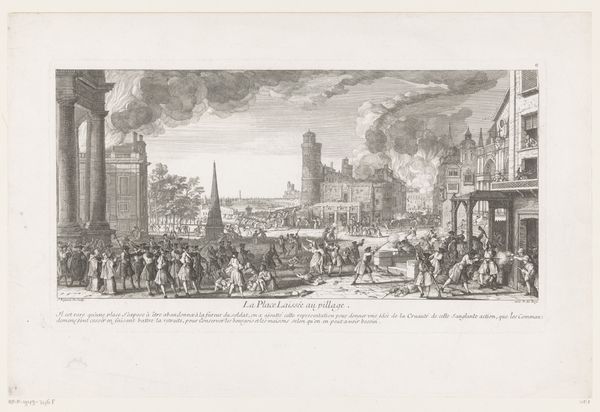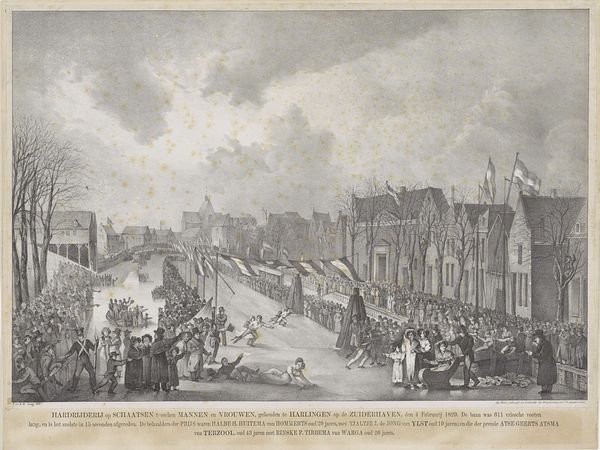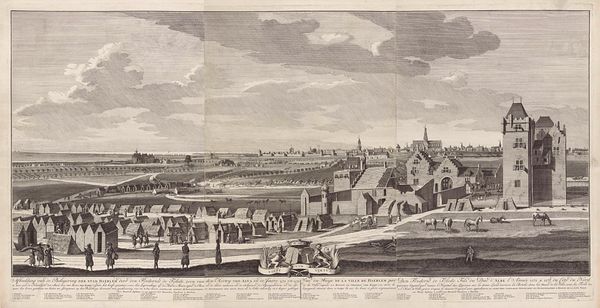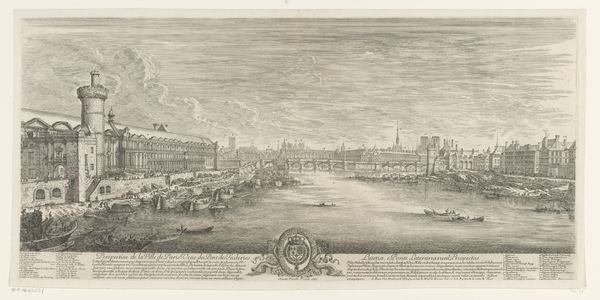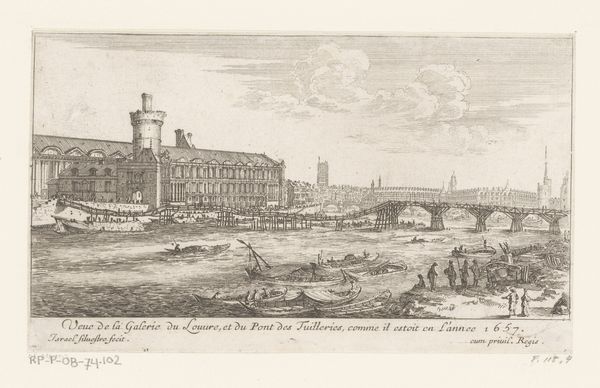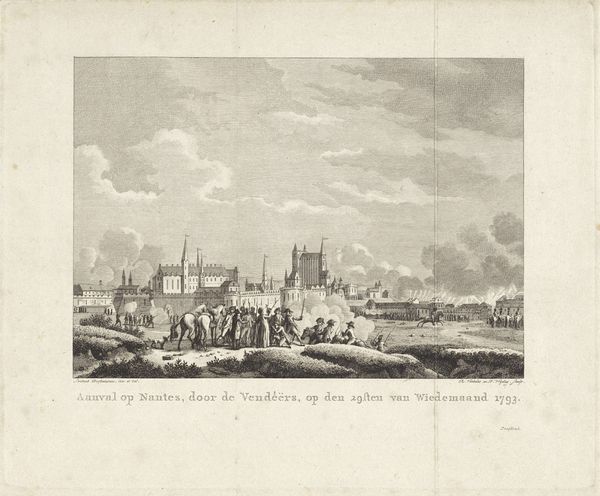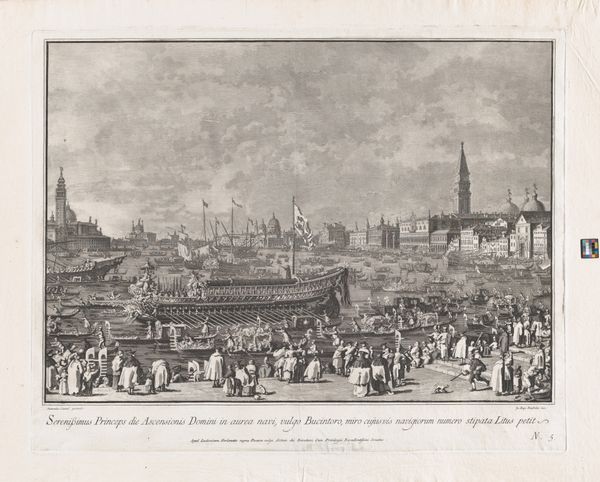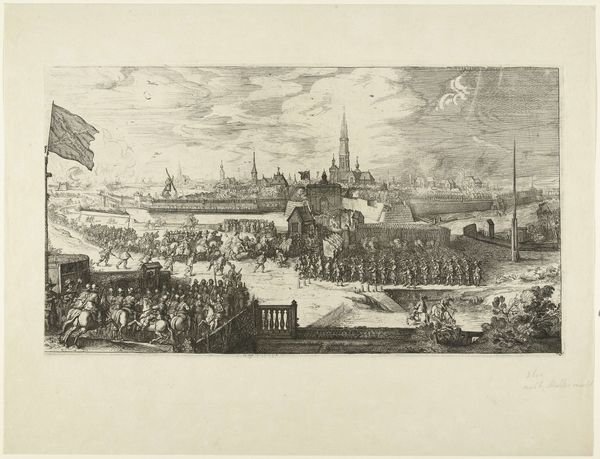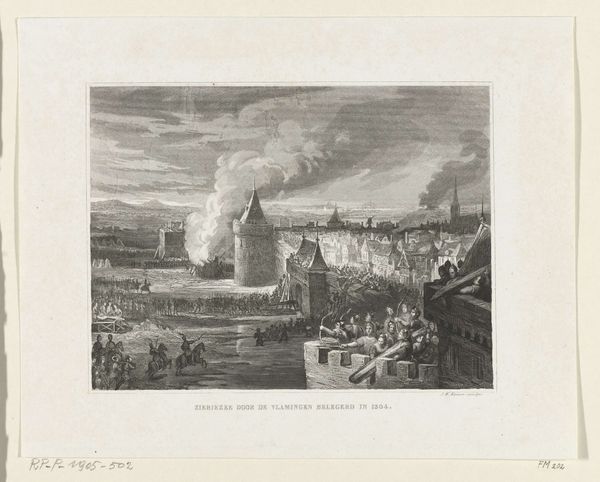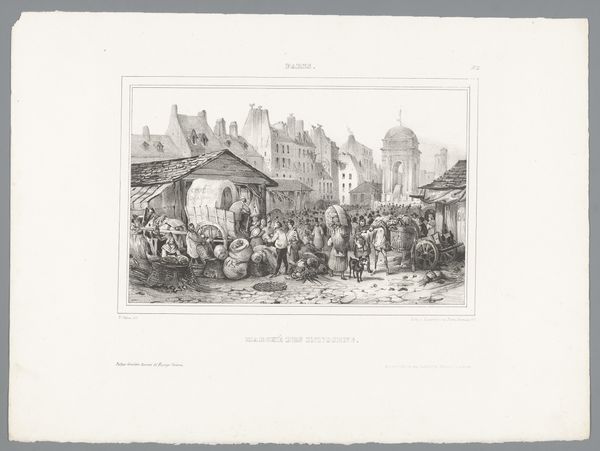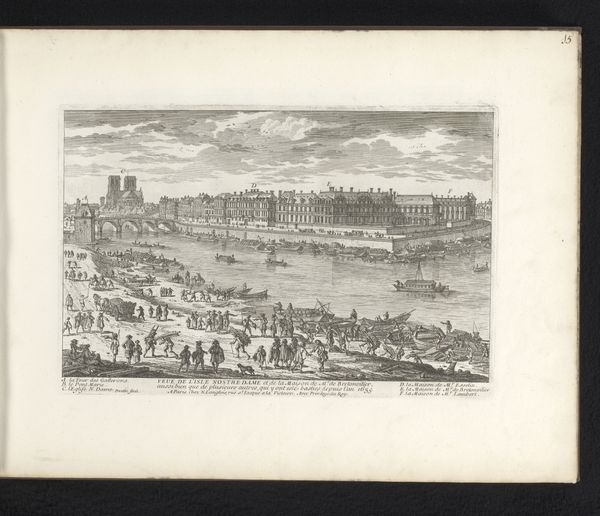
Gezicht op een belegerde stad waarvan de bastions vernietigd worden door soldaten 1732
0:00
0:00
jacquesrigaud
Rijksmuseum
engraving
#
baroque
#
old engraving style
#
cityscape
#
history-painting
#
engraving
Dimensions: height 237 mm, width 438 mm
Copyright: Rijks Museum: Open Domain
Editor: This engraving from 1732 by Jacques Rigaud, titled "View of a besieged city whose bastions are destroyed by soldiers," is incredibly detailed. It really captures a moment of violent conflict, but in this strangely detached, almost clinical way. What strikes you when you look at it? Curator: I'm drawn to how Rigaud's seemingly detached depiction actually highlights the normalization of violence inherent in 18th-century power structures. Consider the context: This isn't just a cityscape; it's a visual record of the exercise of power, meticulously documenting the destruction inflicted upon a community. Who benefits from this detached viewpoint, and whose stories are silenced? How does the aestheticization of destruction normalize military aggression as progress? Editor: So, you're saying that it's not really objective at all? That the very act of documenting it serves a purpose? Curator: Exactly! The image performs a kind of propaganda. Rigaud, consciously or unconsciously, is complicit in a system of domination. This aligns perfectly with thinkers like Foucault, who explored how knowledge and power are intertwined. The 'knowledge' conveyed in this accurate depiction reinforces the 'power' of the besiegers. We need to ask whose perspective is privileged and what impact does this perspective have on how we understand and relate to war. Editor: That makes me look at all the little figures so differently, like they are pieces on a game board or something. Curator: And that, precisely, is what makes it unsettling. Consider, also, that Rigaud made several prints celebrating gardens and landscapes. Do you notice something unexpected about how that other work juxtaposes against the imagery of a city under siege, with destruction replacing cultivation? What ideologies might that duality reveal? Editor: I see what you mean, I hadn’t even considered his other subjects, but this connection is helpful! So this engraving can be viewed as not just a historical document, but as an active participant in justifying the violence it depicts? Curator: Precisely! And recognizing that allows us to critically examine the continued legacy of such depictions in shaping our understanding of conflict and power today.
Comments
No comments
Be the first to comment and join the conversation on the ultimate creative platform.

